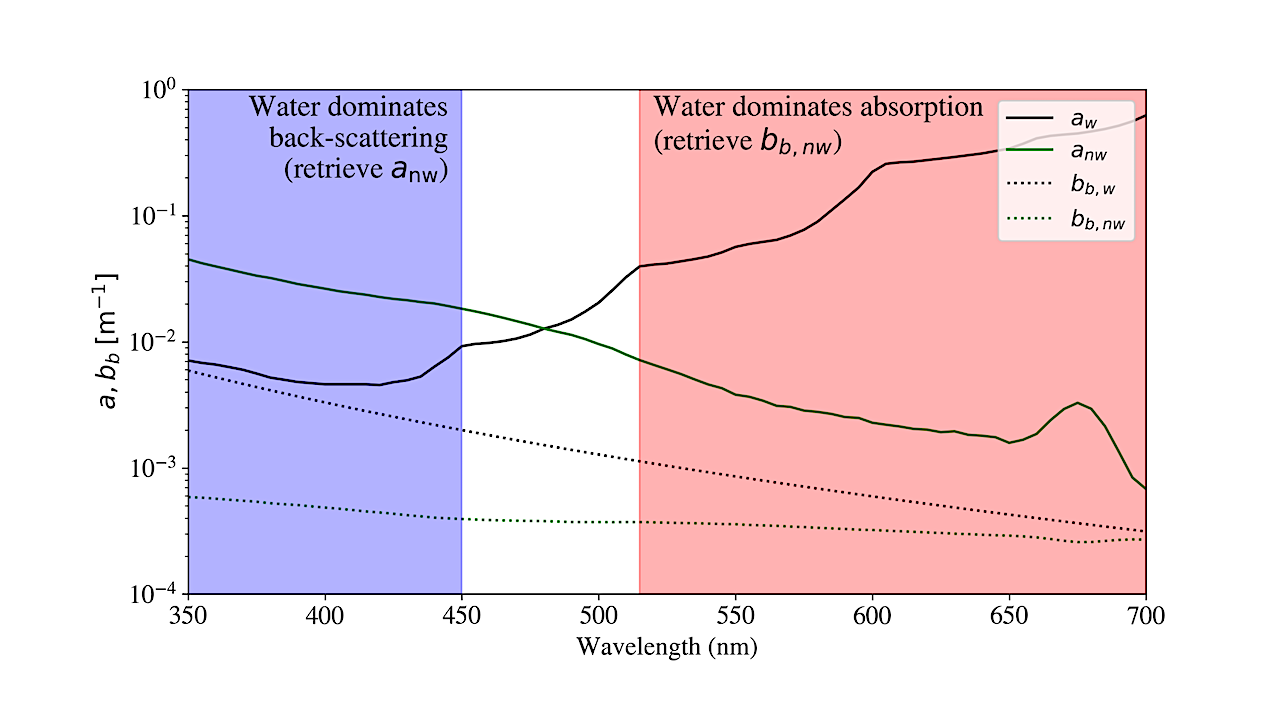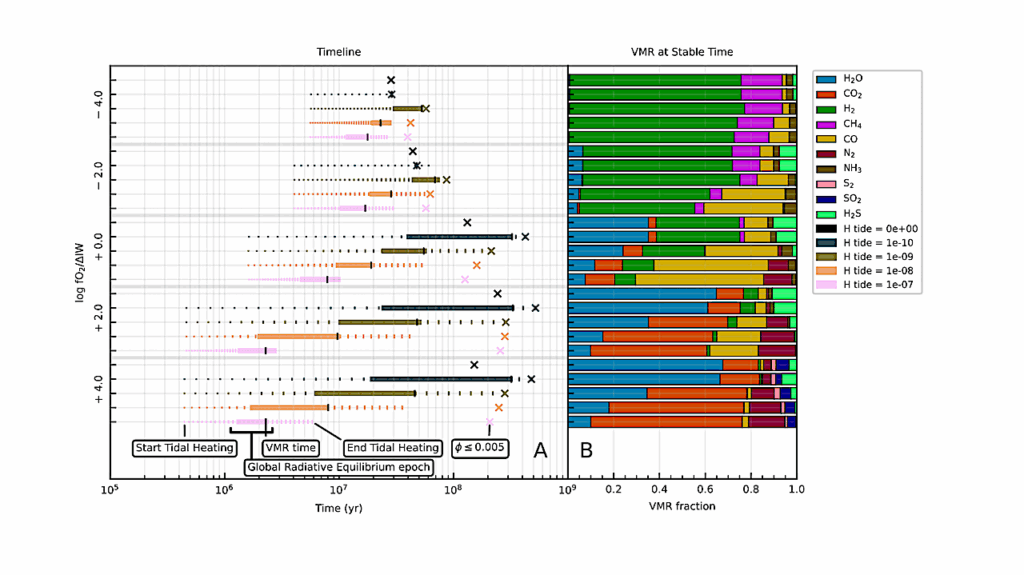Biosignatures: On The Peril of Inferring Phytoplankton Properties From Remote-Sensing Observations

Since 1978, sensors on remote-sensing satellites have provided global, multi-band images at optical wavelengths to assess ocean color. In parallel, sophisticated radiative transfer models account for attenuation and emission by the Earth’s atmosphere and ocean, thereby estimating the water-leaving radiance or and remote-sensing reflectance Rrs.
From these Rrs measurements, estimates of the absorption and scattering by seawater are inferred. We emphasize an inherent, physical degeneracy in the radiative transfer equation that relates Rrs to the absorption and backscattering coefficients a and b_b, aka inherent optical properties (IOPs). Because Rrs depends solely on the ratio of b_b to a, meaning one cannot retrieve independent functions for the non-water IOPs, a_nw and b_bnw, without a priori knowledge.
Moreover, water generally dominates scattering at blue wavelengths and absorption at red wavelengths, further limiting retrievals of IOPs in the presence of noise. We demonstrate that all previous and current multi-spectral satellite observations lack the statistical power to measure more than 3 parameters total to describe a_nw and b_bnw.
Due to the ubiquitous exponential-like absorption by color dissolved organic matter at short wavelengths (l<500nm), multi-spectral Rrs do not permit the detection of phytoplankton absorption a_ph without very strict priors.
Furthermore, such priors lead to biased and uncertain retrievals of a_ph. Hyperspectral observations may recover a 4th and possibly 5th parameter describing only one or two aspects of the complexity of a_ph. These results cast doubt on decades of literature on IOP retrievals, including estimates of phytoplankton growth and biomass. We further conclude that NASA/PACE will greatly enhance our ability to measure the phytoplankton biomass of Earth, but challenges remain in resolving the IOPs.
J. Xavier Prochaska (1,2,3,4), Robert J. Frouin (4) ((1) Affiliate of the Ocean Sciences Department, University of California, Santa Cruz, (2) Department of Astronomy & Astrophysics, UCSC, (3) Kavli IPMU, (4) Scripps Institution of Oceanography, University of California, San Diego)
Comments: submitted to Nature Communications; 30 pages, 20 figures (3 main)
Subjects: Atmospheric and Oceanic Physics (physics.ao-ph); Earth and Planetary Astrophysics (astro-ph.EP)
Cite as: arXiv:2408.06149 [physics.ao-ph] (or arXiv:2408.06149v1 [physics.ao-ph] for this version)
https://doi.org/10.48550/arXiv.2408.06149
Focus to learn more
Submission history
From: J. Xavier Prochaska
[v1] Mon, 12 Aug 2024 13:43:41 UTC (8,278 KB)
https://arxiv.org/abs/2408.06149
Astrobiology,








